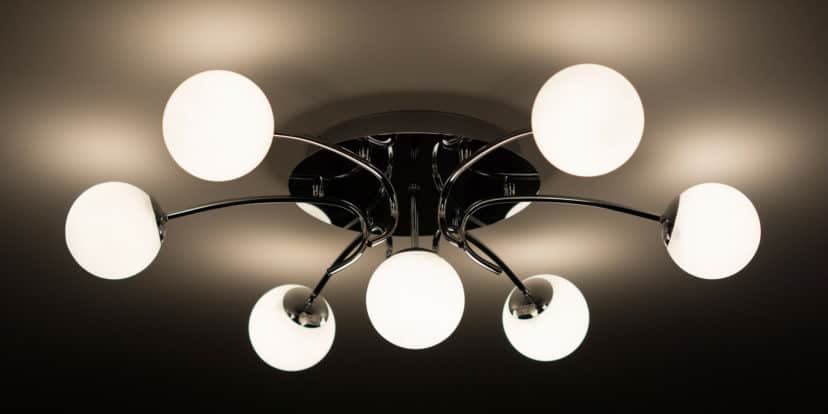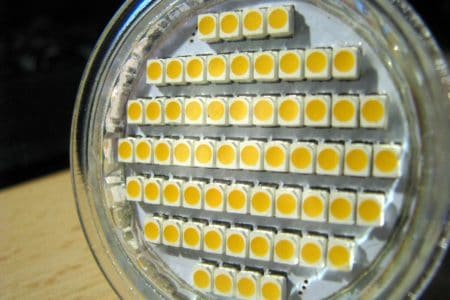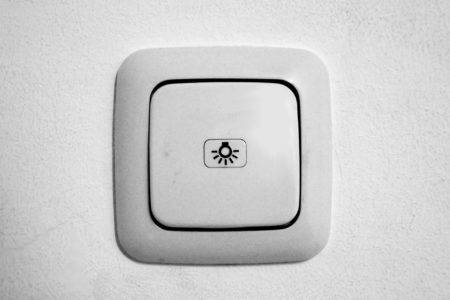How bright are LED lamps? What does the luminous flux in lumen mean? What does luminous intensity stand for? These are the most common questions when it comes to estimating the brightness of LED lamps. This guide will bring light into the darkness. Afterwards you will have a good understanding of the many terms in the topic of LED brightness.
Brightness of LED lights
Assessing the brightness of LED luminaires and light sources can be confusing at first glance. With conventional light sources, brightness was usually assumed with power input in watts. Although this is physically wrong, one had an approximate idea of how bright a 40 watt halogen spotlight or a 60 watt incandescent lamp is.
In the case of LED lamps, this simplified correlation no longer works. Despite all its advantages, the new technology has become more complex. In connection with brightness, the following terms are used here:
- Lumen
- Luminous flux
- Candela
- Luminous intensity
- Light output
In the following sections you will find the meaning and explanation of the individual terms.
With the Lumen Watt Calculator you can easily convert lumens into watts.
LED luminous flux in lumens
The luminous flux indicates how much light is emitted by a light source. This refers to all visible light emitted by the LED lamp in all directions. The physical unit for the luminous flux is called lumen and is abbreviated to lm.
With the old light sources the brightness could be compared well on the basis of the wattage. This is no longer possible with LED technology. The reason for this are different components within different LED lamps. Each component has an influence on the energy efficiency of the lamp. Therefore, two LED luminaires with the same wattage can have different brightness.
It is important to see the lumen value in conjunction with the beam angle of the lamp. A lamp with 600 lumens and a beam angle of 15° is significantly brighter at certain points than a second lamp with 600 lumens but a beam angle of 90°.
How much lumens for which room?
If you would like to completely redesign the lighting for one or more rooms, you can refer to the values in the table below. Rooms such as the kitchen or other work areas should always be brighter than normal living rooms.
| Room | Lumens per ft² |
|---|---|
| Living area | 1000 – 1600 |
| Corridor | 1000 – 1600 |
| Kitchen | 2700 – 3200 |
| Bathroom | 2700 – 3200 |
| Workroom | 2700 – 3200 |
How much light output per square foot the lighting should produce depends on many factors. The color of the furnishings, for example, plays a role here. Dark colors of furniture, walls and floors swallow more light than a bright environment. How bright you want to illuminate your rooms also depends on your own taste.
If you don’t want to set your lighting to a fixed brightness, dimmable LED lamps are a good choice. They are popular especially in the living room.
How many lumens do the old lamps have?
Especially when converting from old incandescent and halogen lamps to LED, you can use the brightness of the old lamps as a guide. For example, old incandescent lamps have the following lumen values:
- 40W incandescent lamp: 430 lumens
- 60W incandescent lamp: 730 lumens
- 100W incandescent lamp: 1380 lumens
For a direct comparison just use the Lumens to Watts Calculator.
Is it possible to add lumen values?
In larger rooms it makes sense to use multiple LED lamps or spotlights. This allows to achieve a very good light distribution. The lumen values of the individual LED lamps can simply be added together to determine the total luminous flux for the room.
Does the luminous flux have to be indicated on the packaging?
According to lighting regulatory, the brightness in terms of luminous flux (in lm) in most cases must be stated in the product description.
The wattage of LED lamps is of little significance. When assessing and comparing the brightness of several lamps, always pay attention to the lumen value.
Light output of LEDs
Sometimes we also talk about the light output of a light bulb or luminaire. This does not refer to electrical power consumption, which is why the term seems somewhat imprecise. The term light output is used colloquially and also refers to luminous flux.

LED Luminous intensity
Luminous intensity is another term for the brightness, but it is related to the solid angle. The luminous flux in lumens can only be used to measure the total light emitted by the lamp. The luminous intensity, on the other hand, can be used to indicate the luminous flux per angular unit. The unit for luminous intensity is candela and is abbreviated as cd. Sometimes it is even given in milli-candela (mcd).
So the candela value can theoretically be used to compare the brightness of LED lamps with different beam angles. For this reason, the luminous intensity is given above all for directional LED spotlights. But in practice it is still difficult to compare the values. The reason for this is that the luminous intensity decreases from the center of the beam angle towards the edge.
The actual candela value in each solid angle can only be represented with a light distribution curve. This diagram looks very technical and is only given by a few manufacturers in the data sheet.
What does the solid angle mean?
The solid angle to which the luminous intensity refers describes the total proportion of the room within its angle. The less common unit of solid angle is steradian (sr).
Does the luminous intensity have to be specified in the product description?
In contrast to the lumen value, the indication of luminous intensity is not mandatory when selling LED lamps. Especially for strongly directed LED spots, manufacturers still like to quote candela values. Large numbers make this information very effective in advertising. Especially with milli-candela values, for example 800,000 mcd, one should not be dazzled in the truest sense of the word.
In practice, it is difficult to select an LED light source on the basis of the luminous intensity in candela. Orient yourself better on the luminous flux in lumens in conjunction with the beam angle.
Conversion of lumen to candela
The conversion of luminous flux (lumen) into luminous intensity (candela) can be achieved with this formula:
Luminous intensity (cd) = luminous flux (lm) : solid angle (sr)
Conclusion
Now you know the difference between the luminous flux in lumens or the luminous power and the luminous intensity in candela. In addition, you know that the wattage of LED lamps is only a small indicator of brightness. With modern LED luminaires and light sources, you can estimate the brightness on the basis of the luminous flux in lumen (lm). For directional LED spots, always consider this spec in conjunction with the beam angle.






